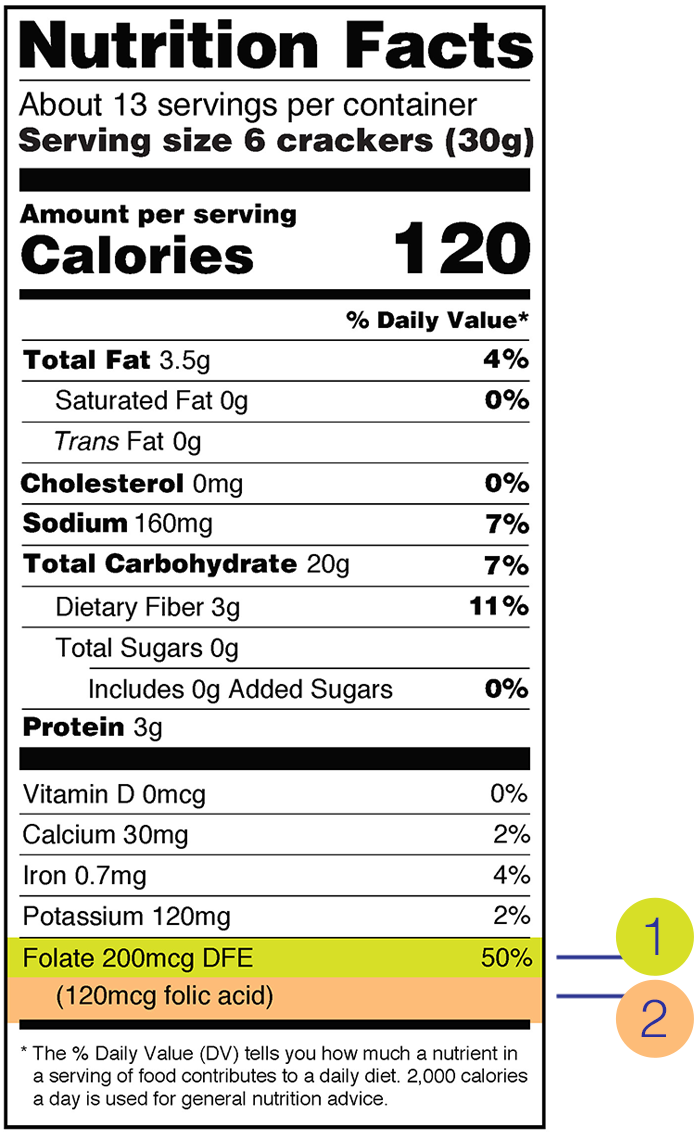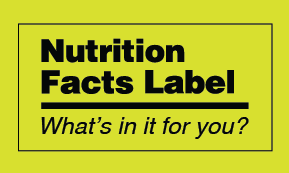Folate and Folic Acid on the Nutrition and Supplement Facts Labels
What is folate?
Folate is a B vitamin that helps your body make healthy new cells.
What foods provide folate?
Folate is naturally present in many foods, including vegetables (especially asparagus, brussels sprouts, and dark green leafy vegetables such as spinach and mustard greens), fruits and fruit juices (especially oranges and orange juice), beef liver, nuts (such as walnuts), and beans and peas (such as kidney beans and black-eyed peas).
You also get folate by eating foods fortified with folic acid. Folic acid is a form of folate that can be added to foods during the manufacturing process. Foods that are fortified with folic acid include: enriched breads, flours, pastas, rice, and cornmeal; fortified corn masa flour (used to make corn tortillas and tamales, for example); and certain fortified breakfast cereals. Folic acid is also found in certain dietary supplements.
How much folate do I need?
The amount of folate you need depends on your age, but most adults can rely on the Daily Value (DV) to find out how much folate to consume. The Daily Values (DV) are reference amounts (in grams, milligrams, or micrograms) of nutrients to consume or not to exceed each day. For folate, the DV is 400 micrograms (mcg) of dietary folate equivalents (DFE). However, individuals who are pregnant should consume 600 mcg DFE daily, and individuals who are breastfeeding should consume 500 mcg DFE daily.
Why is folate especially important for individuals who can become pregnant?
Folate is important for lowering the risk of serious problems that occur during pregnancy that can affect the baby’s brain (anencephaly) and spine (spina bifida). Therefore, all individuals who could become pregnant should consume 400 mcg of folic acid daily either from fortified foods (such as enriched breads, flours, pastas, rice, cornmeal, corn masa flour, and certain breakfast cereals), dietary supplements, or a combination of the two, in addition to the folate they get from following a healthy eating pattern.
How is folate listed on the Nutrition Facts label and Supplement Facts label?
The mcg DFE is the unit of measure for folate on the Nutrition Facts and Supplement Facts label. The measure of mcg DFE is used because the body has an easier time absorbing folic acid than folate.
A %DV is shown for the total amount of folate in a product, and if any of the total folate comes from folic acid, that amount of folic acid is listed in mcg in parentheses.
1 – Folate is shown as mcg DFE and as a %DV
2 – Folic acid is shown in parenthesis and is important for individuals who could become pregnant
Am I getting enough folate/folic acid?
For most people, using the %DV can help them choose foods to get enough folate in their diet. For individuals who could become pregnant, look for the amount of folic acid in mcg listed in the parentheses on the label so you know how much you are consuming from fortified foods and dietary supplements. If a product’s label lists %DV for folate but does not show mcg of folic acid in parentheses that means that folic acid has not been added to the product.
Remember:
- 5% DV or less of folate per serving means the product is low in folate.
- 20% DV or more of folate per serving means the product is high in folate.
Don’t forget to include foods that have folate, such as those listed above, in your healthy eating plan. To determine if a food has added folic acid, look for “folic acid” in parentheses on the label. Talk to your healthcare provider about which nutrients you should track for overall health.
Learn More:



